Mochi is a traditional Japanese dessert made with a variety of short-grain glutinous rice, also known as sticky rice. This is a simple yet famous treat with a unique texture and taste, but due to its sticky nature, there is a prevailing doubt about its gluten status.
Have you also wondered if you can enjoy the delicious chewiness of mochi without worrying about gluten? Is mochi gluten free?
Yes, plain mochi made from just glutinous rice, water, and sugar is considered gluten-free. Rice flour does not contain gluten neither is the other two ingredients. So, it’s a perfect sweet treat for anyone having a gluten allergy.
However, it’s important to note that some commercial mochi products or variations might incorporate other ingredients, flavorings, or fillings that could contain gluten.
In this article, we will look at different types and ingredients of mochi, how they are prepared, and when they are not gluten free.
Keep reading to uncover them all.
Table of Contents
When is Mochi Not Gluten Free?
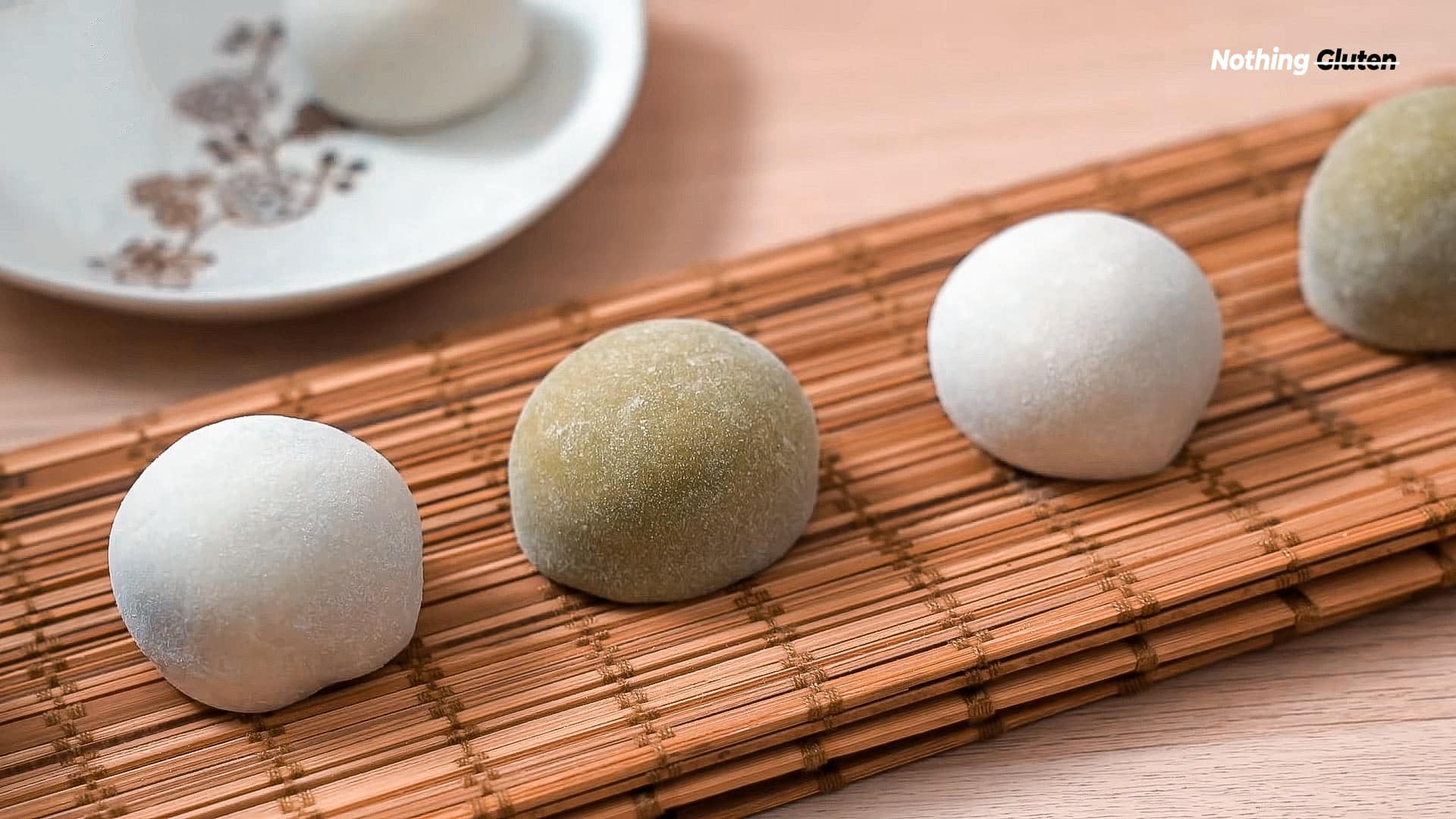
As stated before, traditional mochi, made from sticky rice, is safe for those who need to avoid gluten. However, there are situations when mochi might not be gluten-free.
For instance, flavored mochi, such as those with soy sauce-based coatings or certain fillings, might introduce gluten-containing elements.
Additionally, if mochi is prepared alongside gluten-containing products, there’s a chance of cross-contamination.
This can happen if the same equipment or utensils are used for both gluten-free and gluten-containing items, leading to trace amounts of gluten in the mochi.
Don’t forget to read the ingredient label when buying ready-made mochi. Some commercially-produced mochi might include additives or flavorings that contain gluten.
What are the Ingredients in Mochi? Nutritional Information
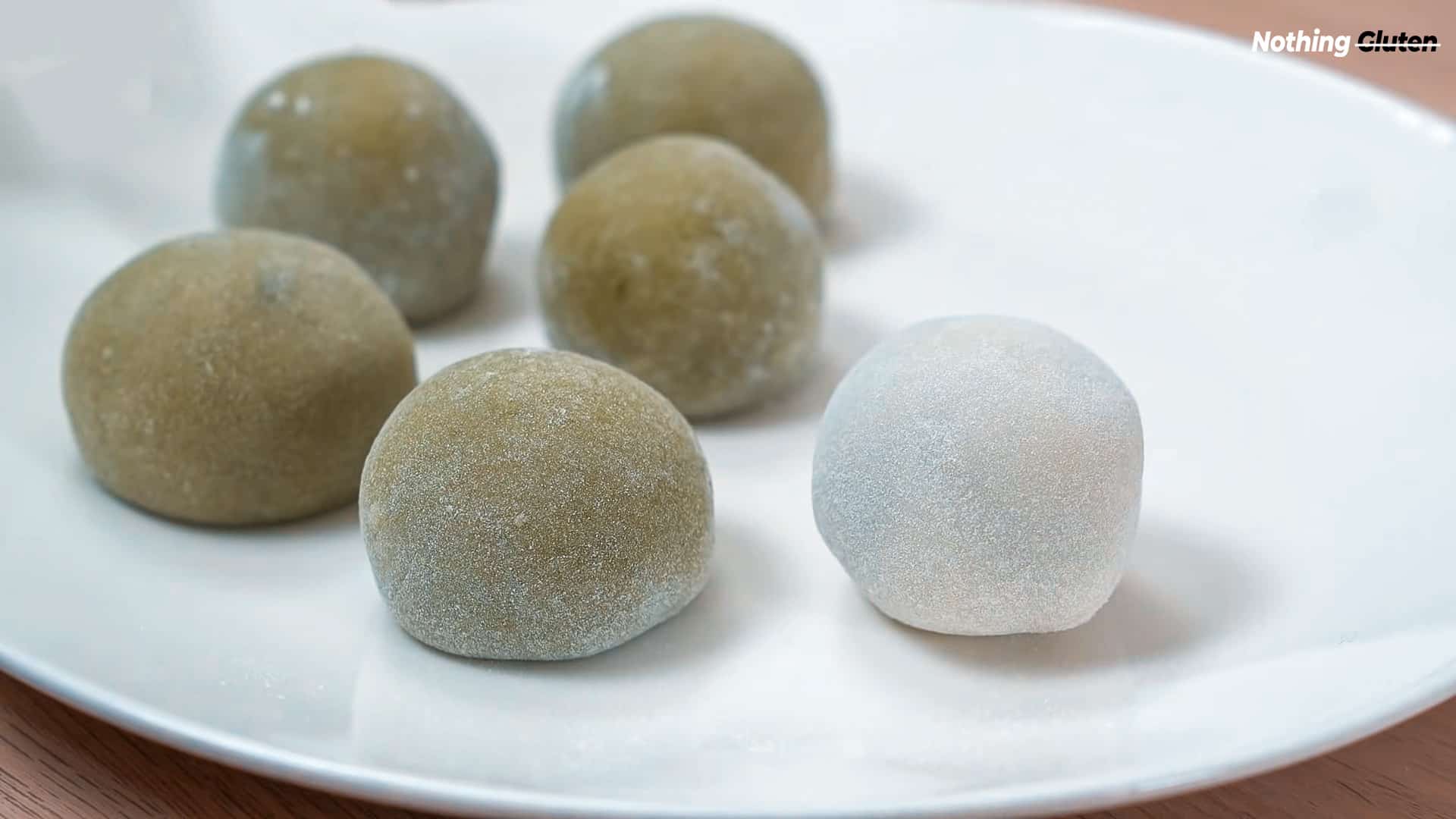
The main ingredient in mochi is short-grain glutinous rice, also known as Mochigome, which has a sweet taste. Other ingredients used in the recipe are water and sometimes a sweetener like sugar. Here’s a breakdown of the ingredients and some general nutritional information for plain mochi:
Here is a breakdown of some general nutritional information for plain mochi per piece:
| Nutrient | Amount |
|---|---|
| Calories | 126 |
| Total carbs | 25g |
| Dietary fiber | 0.2g |
| Sugar | 17g |
| Protein | 1.3g |
| Cholesterol | 2mg |
| Sodium | 9.2mg |
| Total fat | 2.6g |
| Trans fat | 0g |
Please note that the nutritional values can change if additional ingredients, flavorings, or fillings are added to the mochi. For instance, filling mochi with ingredients like red bean paste or fruits will have different nutritional profiles based on the added components.
Is Mochi Dairy Free?
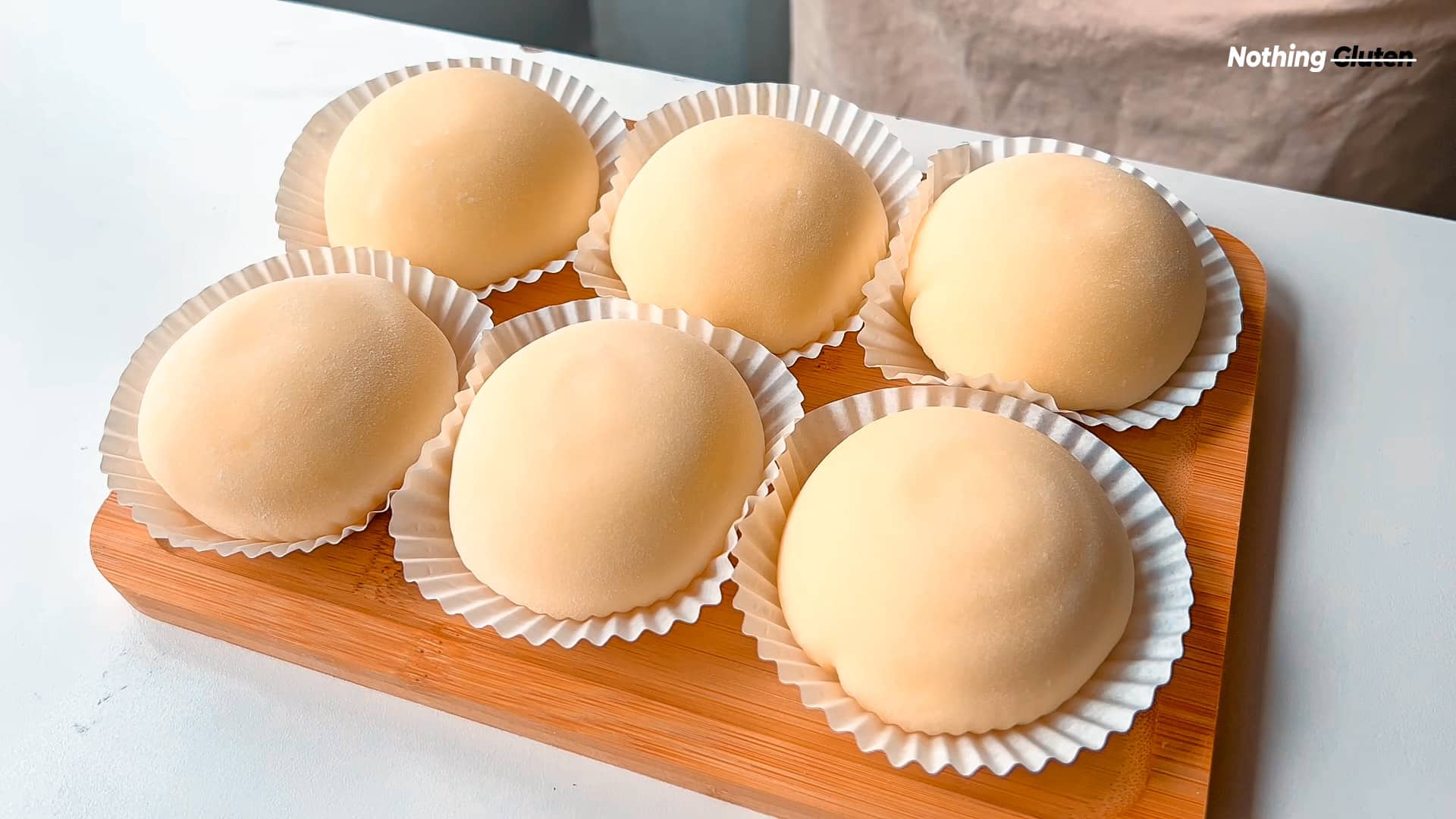
Yes, traditional mochi is dairy-free. The basic, plain mochi made from just glutinous rice, water, and sugar does not contain dairy ingredients. Hence, this is the best sweet treat for vegans as well as lactose-intolerant people.
But Some mochi varieties may have fillings or coatings that contain dairy-based ingredients. For example, mochi filled with ice cream or custard could contain dairy. Flavored mochi with coatings made from condensed milk or other dairy-based sauces is also a possible source of dairy.
Gluten Free Mochi Brands Must Try
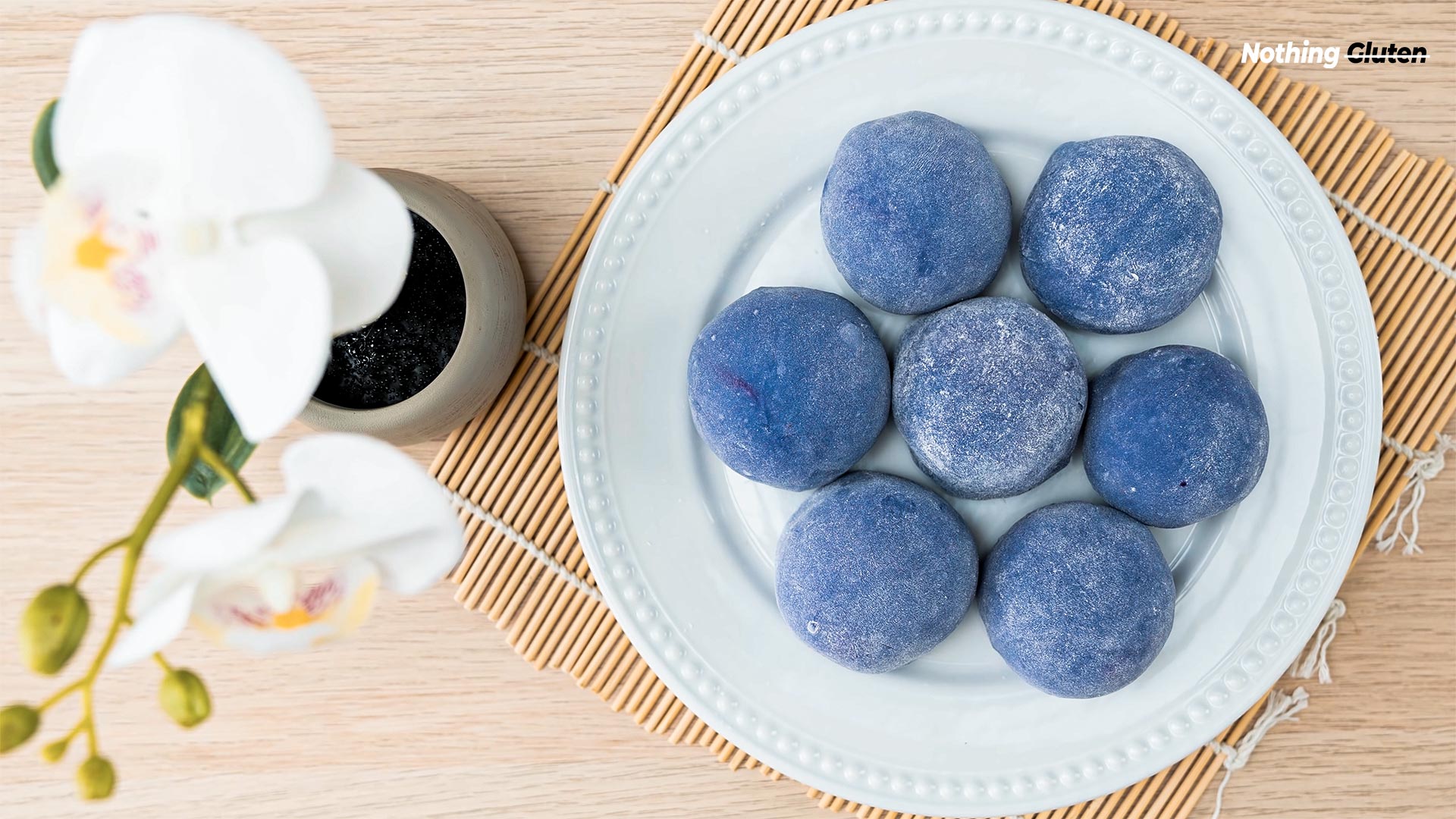
Here are some gluten free mochi brands you can try out-
#1. Little moons
Little Moons is a label gluten free brand offering various mochi flavors. Made with fresh ingredients, their mochi ice creams are super tasty, plus they have some vegan options as well.
#2. Bubbies
Bubbies is a popular brand offering gluten free mochi stuffed with flavored ice cream. They have multiple flavors, including- blood orange, Alphonso mango, passion fruit, pistachio, cookies & cream, triple chocolate, and more.
#3. Mochidoki
Mochidoki also makes gluten free mochi; however, some of their mochi flavors may contain gluten.
The flavors containing zero gluten are- earl gray, Jasmin boba, purple sweet potato, espresso, black sesame, matcha, chocolate, red bean, salted caramel, vanilla chip, strawberry, and a few more.
Do check the ingredient list and package label before buying.
#4. My/Mochi
Last but not least, My/Mochi is another brand that makes gluten free mochi ice creams. They, too, have a variety of flavors, and most of them contain zero gluten.
Easy Gluten-free Mochi Recipe to Try at Home
The best way to enjoy gluten free mochi is to prepare it at home. The recipe requires basic ingredients and can be made in less than 30 minutes.
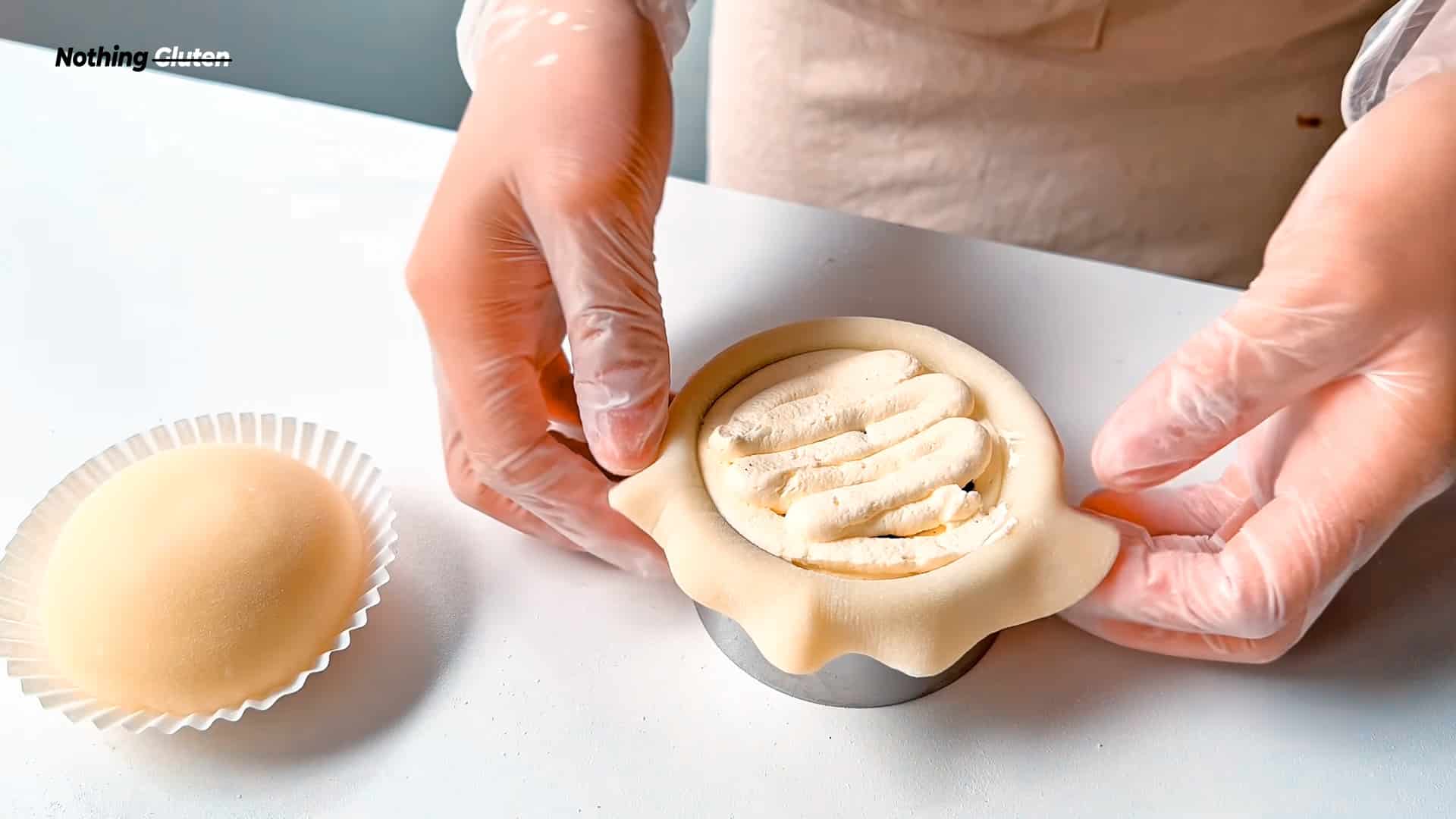
Ingredients
- 1 cup glutinous rice flour (make sure it’s labeled gluten-free)
- 1/4 cup granulated sugar
- 1 cup water
- ½ cup cornstarch (for dusting)
- ¼ tsp salt
Instruction
- In a microwave-safe bowl, whisk together the glutinous rice flour, granulated sugar, and salt until well combined. Gradually add the water to the dry mixture while stirring to create a smooth batter.
- Cover the bowl with a plastic wrap and Place the bowl in the microwave and cook on high for 1 minute. Carefully remove the bowl and stir the mixture vigorously with a spatula.
- Return the bowl to the microwave and cook for an additional 1 minute. The mixture should be thick and sticky.
- Dust a clean surface with cornstarch to prevent sticking. Transfer the hot mochi mixture to the dusted surface. Use your hands or a spatula to flatten and shape the mochi into a square or rectangle about 1/2 inch thick.
- While the mochi is still warm, cut it into small squares or rectangles using a sharp knife or a mochi cutter. Dust the cut edges with more potato starch or cornstarch to prevent sticking.
- Enjoy your homemade gluten-free mochi immediately, or store it in an airtight container to maintain its freshness. Consume within a day or two for the best texture.
Gluten-Free Alternatives to Mochi
If you want to try some other delicious gluten free desserts other than mochi, you can try these-
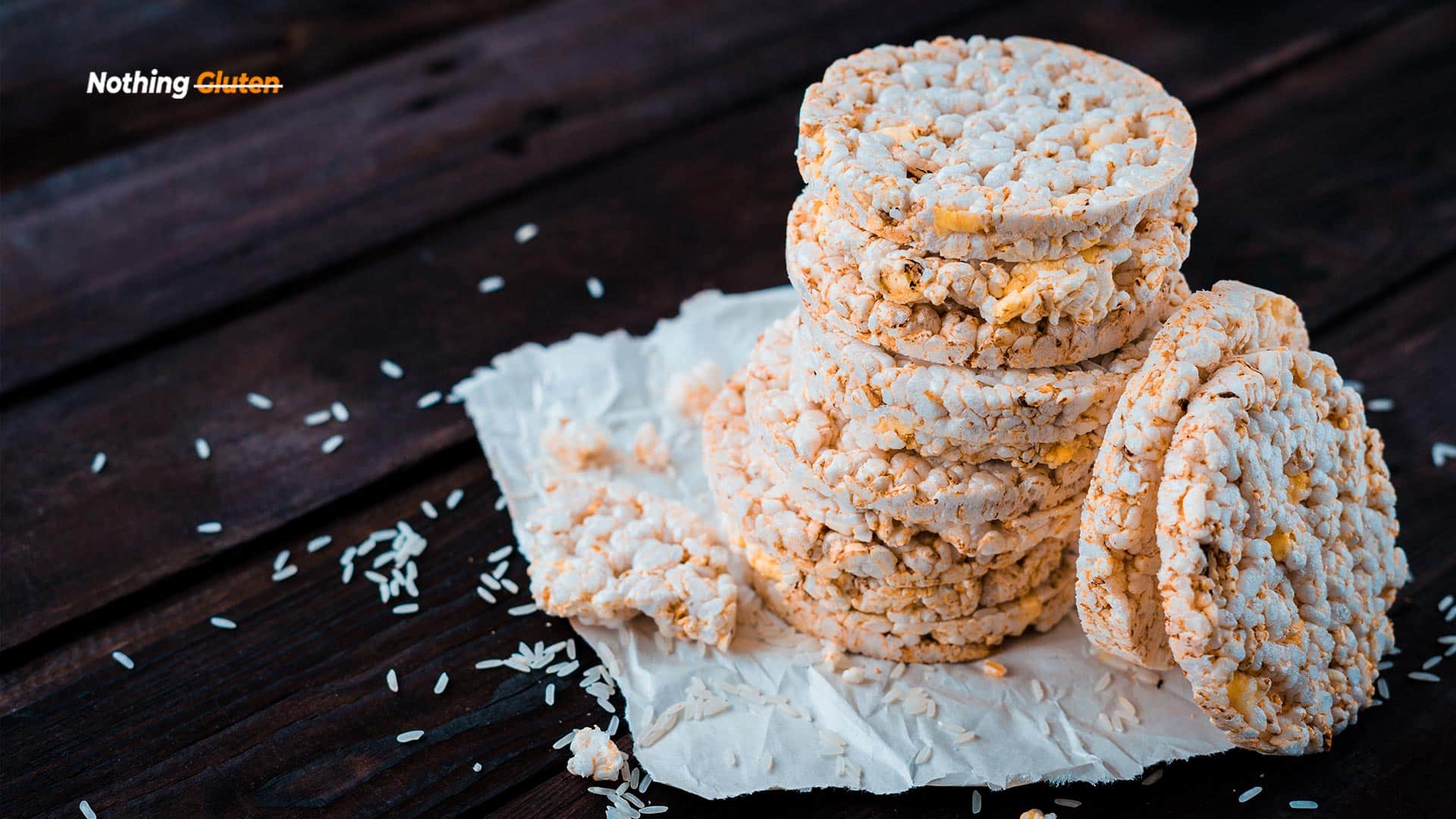
- Rice cakes- Rice cakes are a simple and readily available gluten-free option. They are made from rice and come in various flavors. You can top them with spreads or have them as it is.
- Coconut or mango sticky rice dessert: Coconut or mango sticky rice desserts, common in Southeast Asian cuisine, are naturally gluten-free and have a chewy texture. They often feature sweet coconut milk and can be topped with fresh fruits and taste absolutely delicious.
- Tapioca pearls: Tapioca pearls are often used in bubble tea, but they can also be used to make a chewy dessert similar to mochi. Cooked tapioca pearls can be mixed with sweeteners and flavors to create a gluten-free treat.
FAQs
Q. Is Mochi Made from Wheat?
No, mochi isn’t made from wheat. It’s made from rice flour, but some store made may contain wheat, so read the package label while buying.
Q. How can I prevent cross-contamination when making gluten-free mochi at home?
Use clean utensils and equipment, and ensure that the work surface is free from any gluten-containing ingredients. Be cautious when using shared utensils that might have been in contact with gluten.
Q. Can I freeze gluten-free mochi?
Yes, you can freeze gluten-free mochi to extend its shelf life. Place individual pieces in an airtight container or freezer bag. Thaw at room temperature before consuming.
Final Thoughts
Plain traditional mochi is gluten free and has no trace of wheat, barley, rye, or other gluten-containing ingredients. Therefore, it’s a perfect dessert for gluten-intolerant individuals.
However, you have to be cautious about store-bought or flavored mochi because the flavorings and preservatives used may contain gluten or may induce the risk of cross-contamination.
Since making mochi is super simple, you can prepare it at home. I have shared an easy mochi recipe, do check that out to make quick gluten free mochi whenever you get a craving.
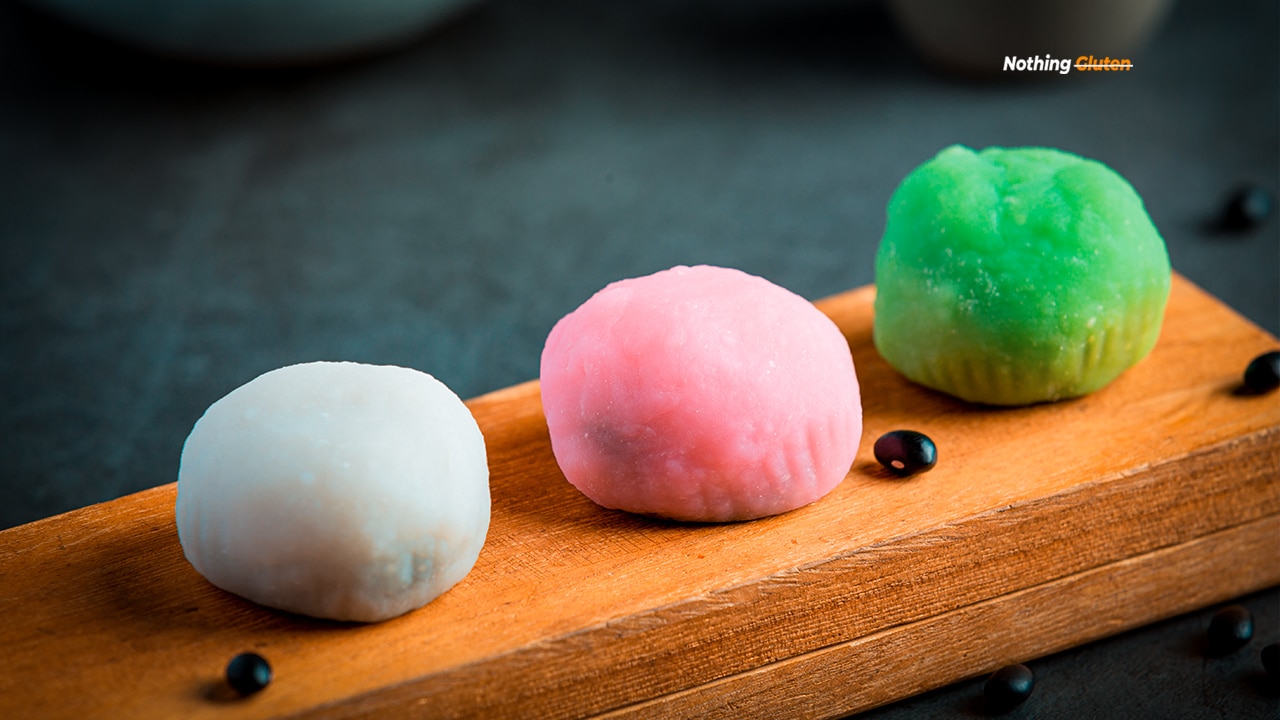


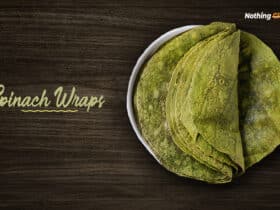

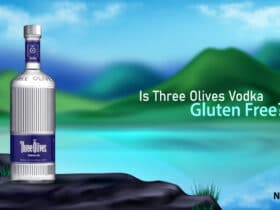

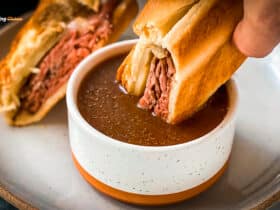

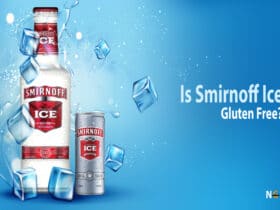
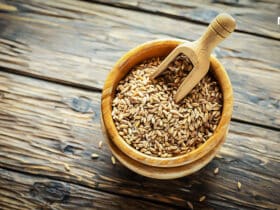


Leave a Reply
View Comments